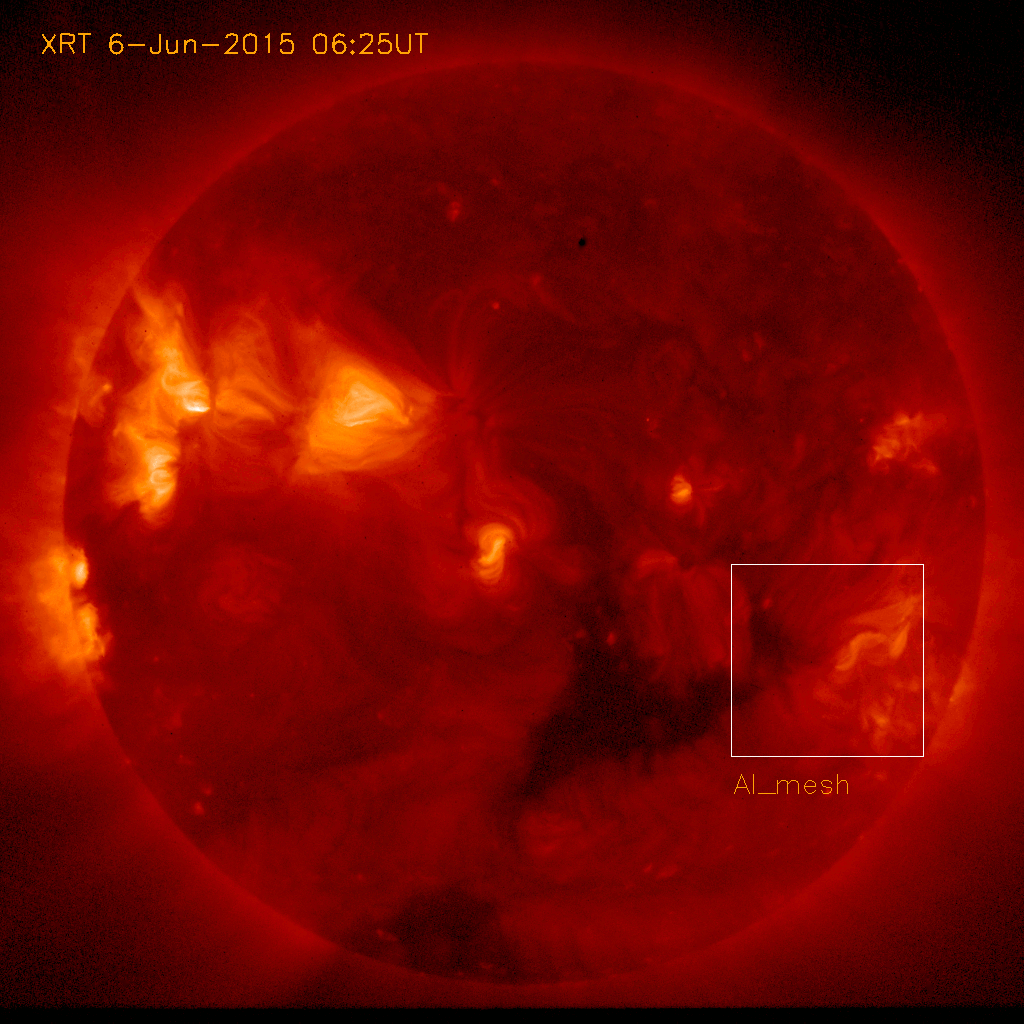
Click for full-resolution gif animation.
Expanding Boundaries
|
This gif animation demonstrates how different the edges of coronal holes look in three of the X-Ray Telescope's fitlers, Al_mesh, Al_poly, and thin_Be. As the name implies, coronal holes are regions where the solar atmosphere is less dense and cooler than its surroundings. It is also where the solar magnetic field appears open to space. These regions are a source for the fast solar wind which causes the beautiful aurora borealis. Coronal holes are easy to spot in X-rays but they are neither static or simple solar features. In fact, just determining the boundary of a coronal hole is quite difficult and depends on many factors including the wavelength of light we observe it in. So when Hinode planners noticed there were no active regions near the west limb they seized the opportunity to take long exposures of this coronal hole boundary. The background image was taken using a broad filter, Al_mesh, that sees cool (500,000 degrees) features. The coronal hole appears smallest in this filter. You'll also notice the Al_mesh image is not as bright as the other two boxed images. That is because it is has the shortest exposure time. The next boxed image was taken with the Al_poly filter. This filter sees mostly million degree plasma making the hole appear slightly larger. However, x-rays from cool plasma is not completely blocked and therefore those regions will appear faint in this filter. The coronal hole appears largest in the thin_Be filter, this filter blocks all the cool plasma and really only sees the million degree corona. Even though the exposure time is almost 10 times longer for the thin_Be image, it cannot detect the cool boundary plasma.
Click here for a summary of XRT's temperature responses.
|
(Prepared by Patricia Jibben)
| Back | Archive | Next |